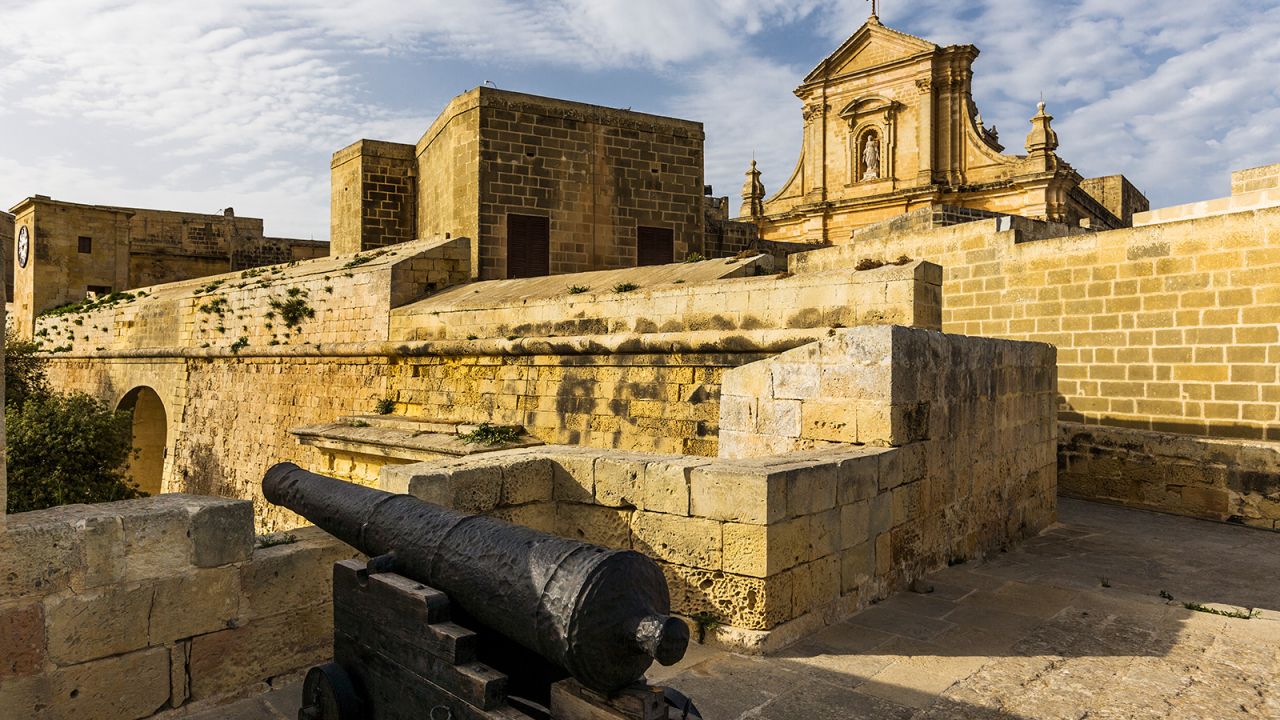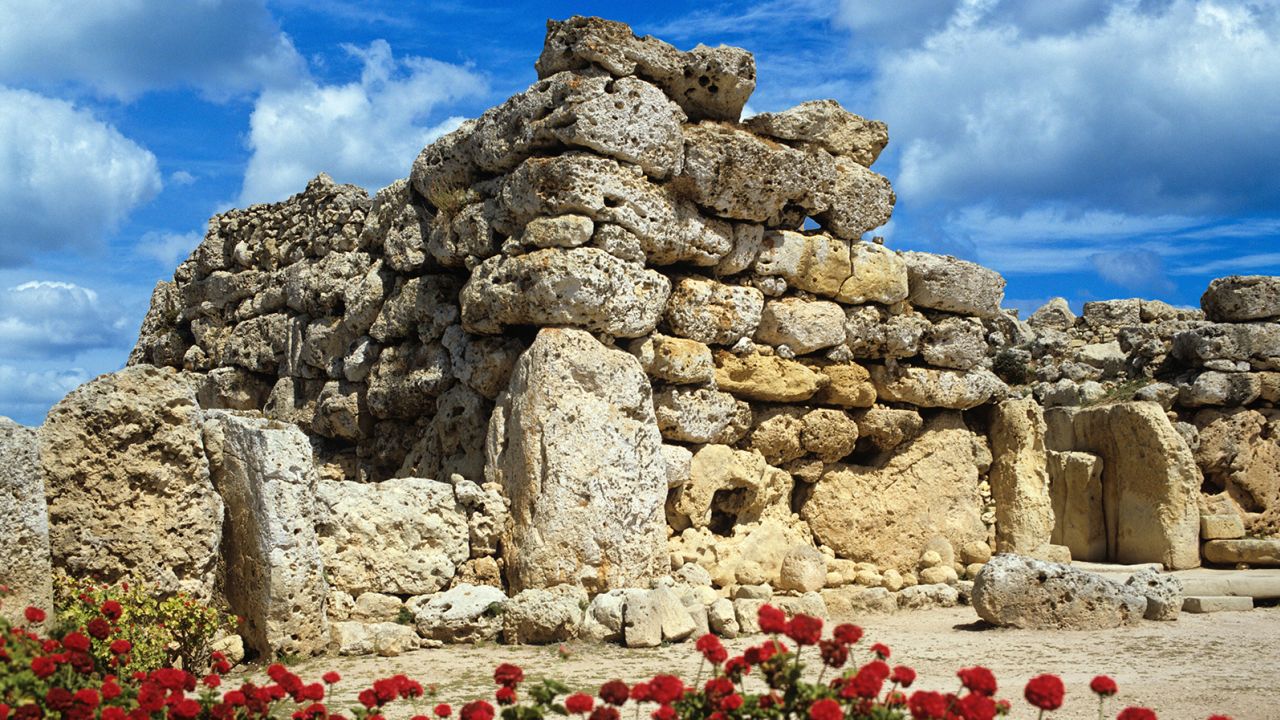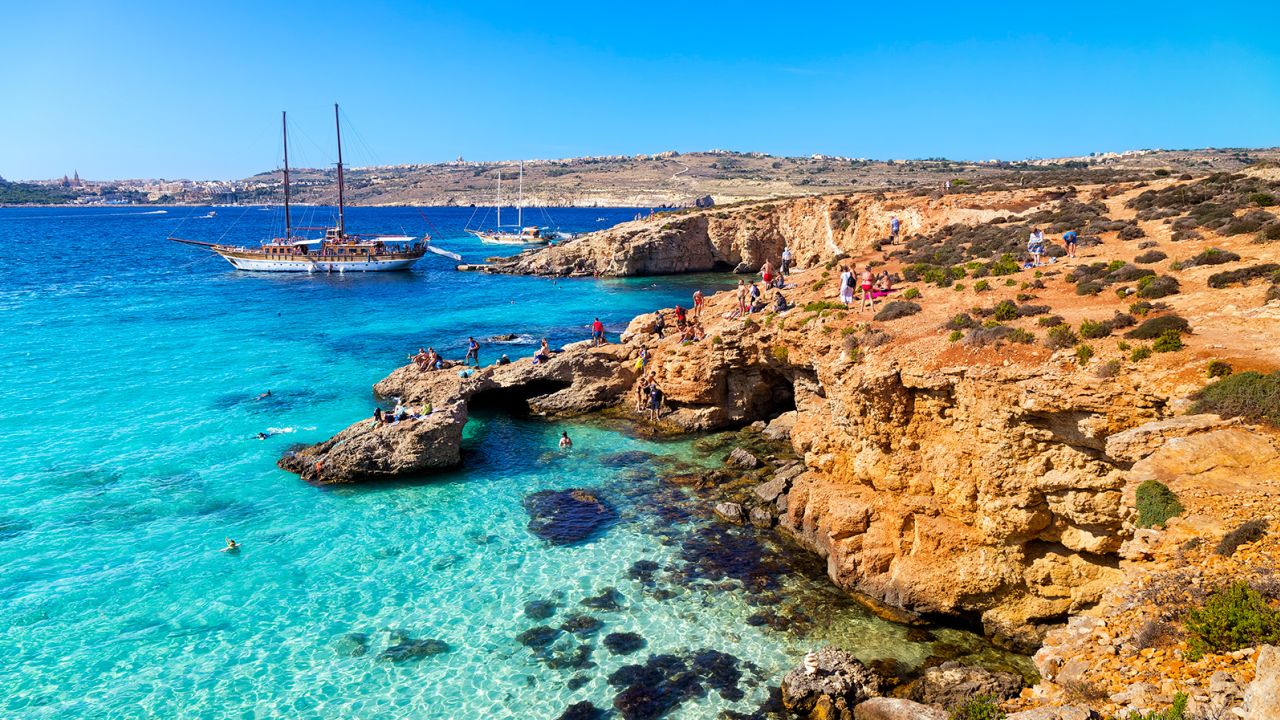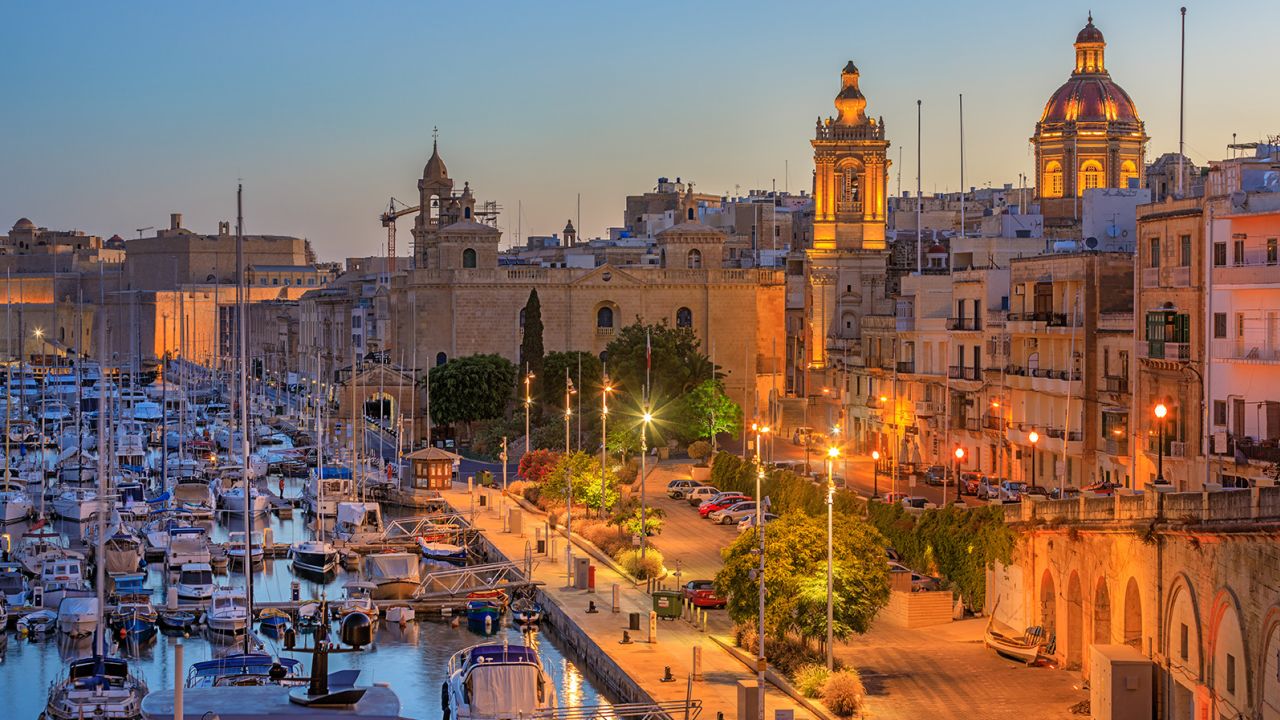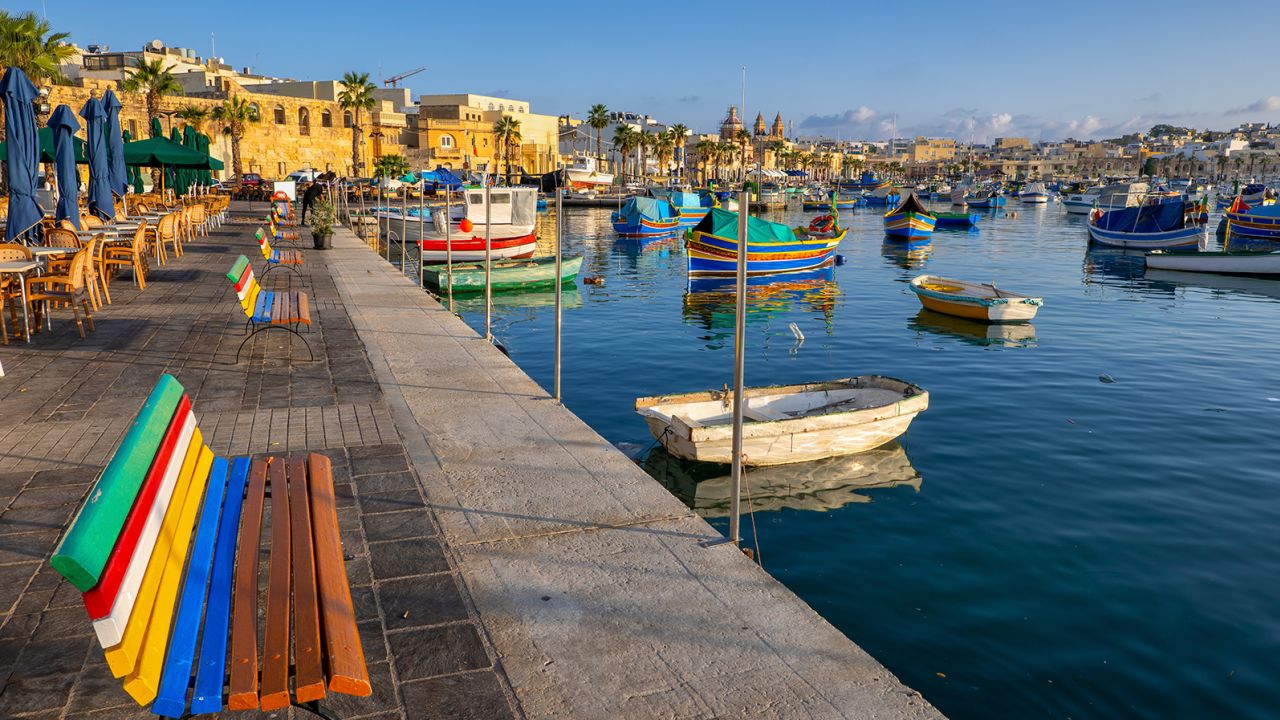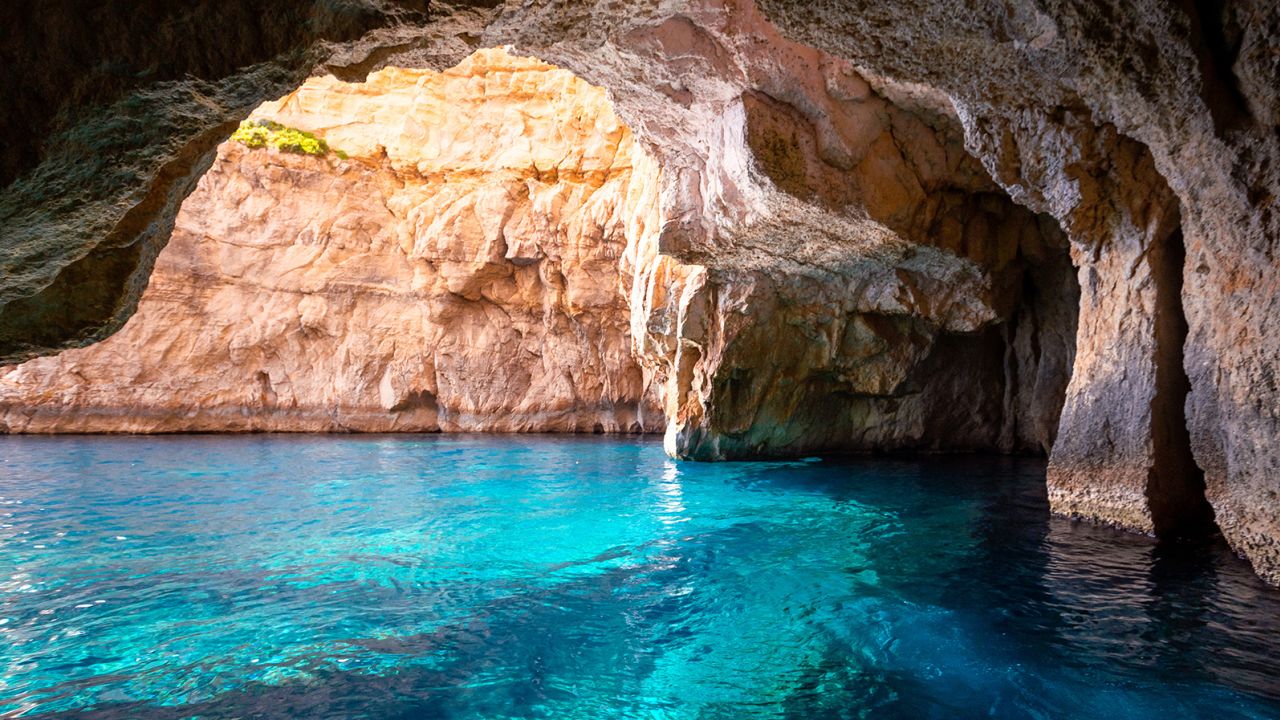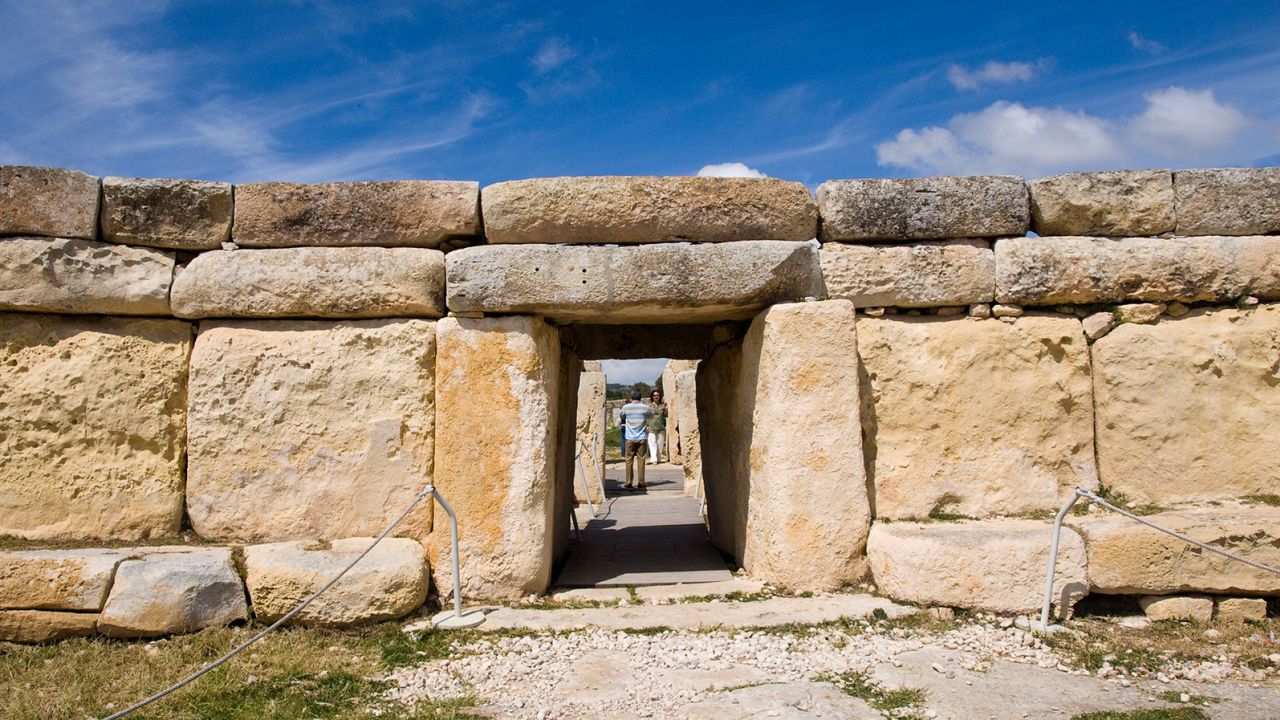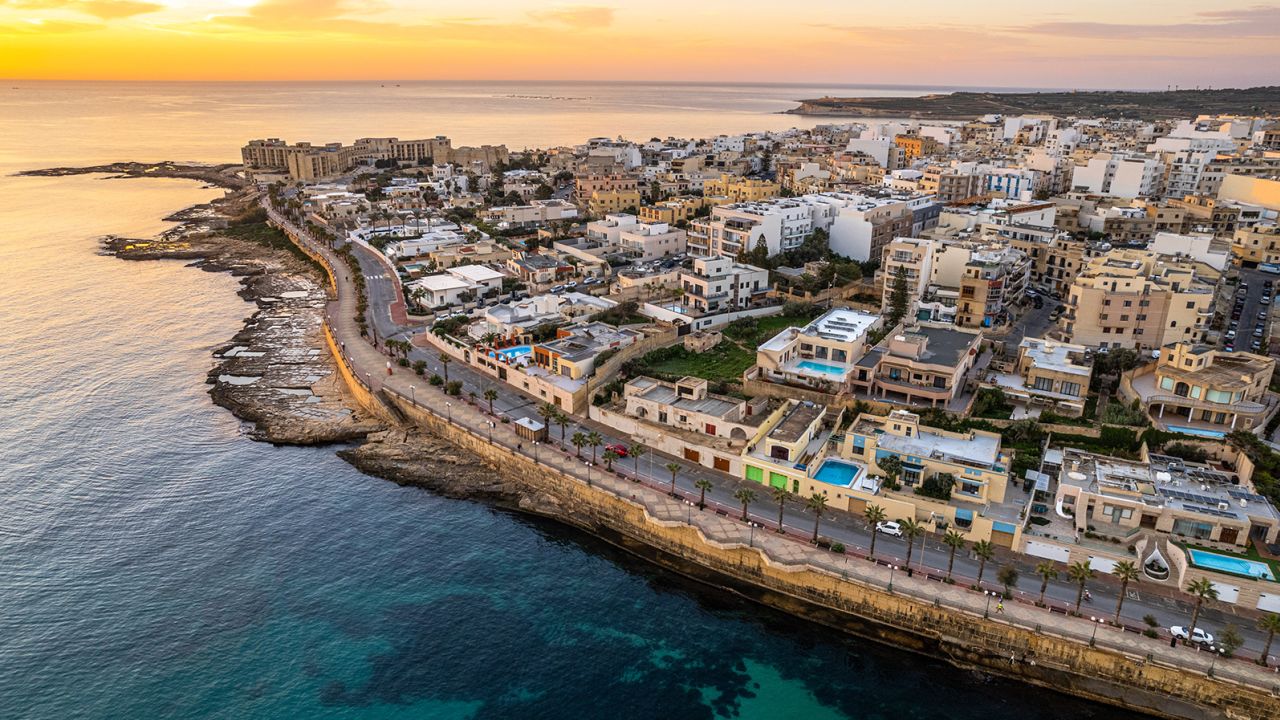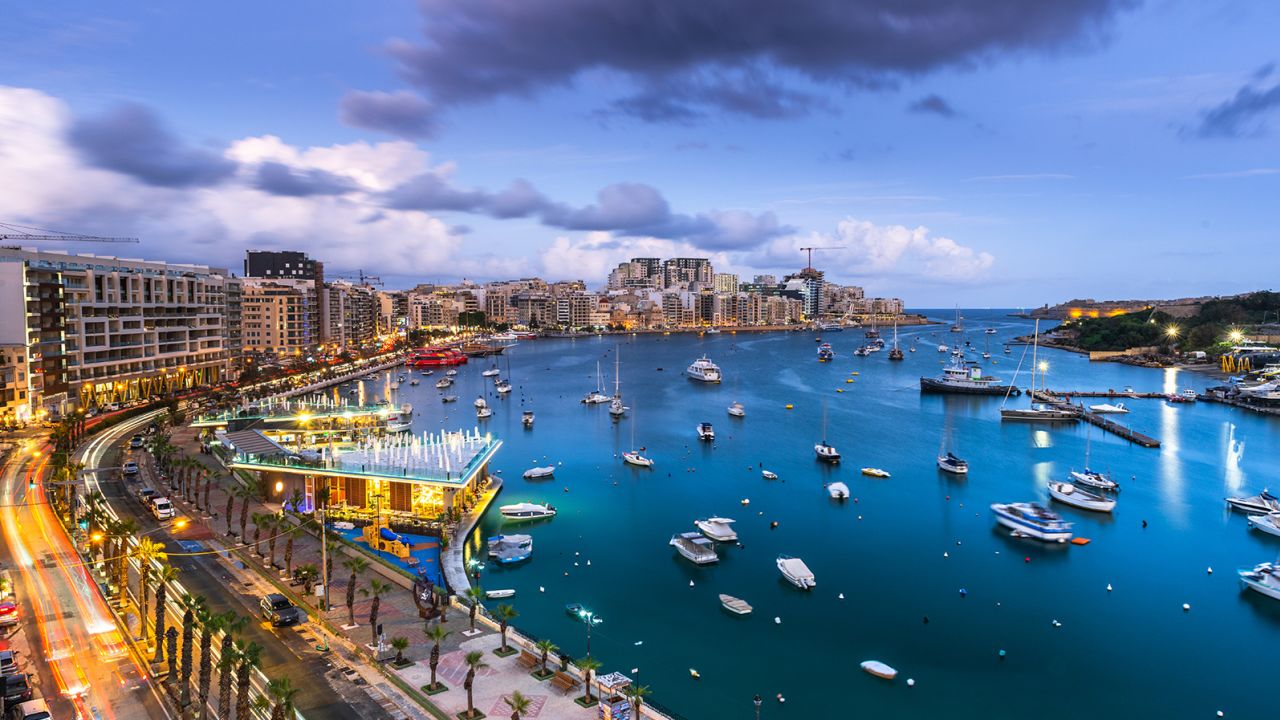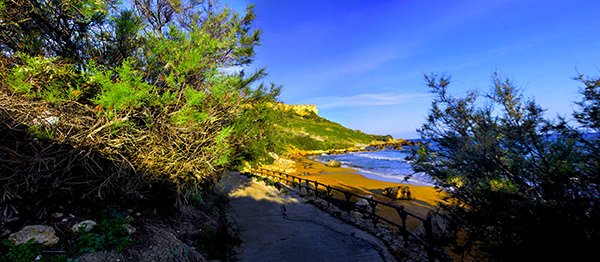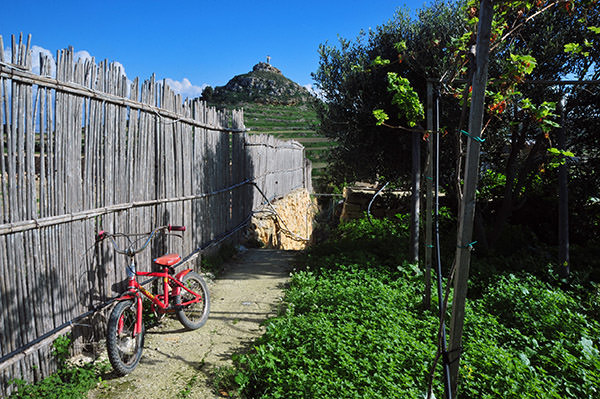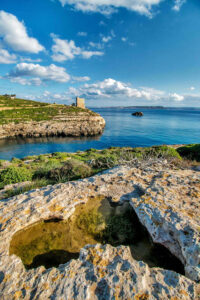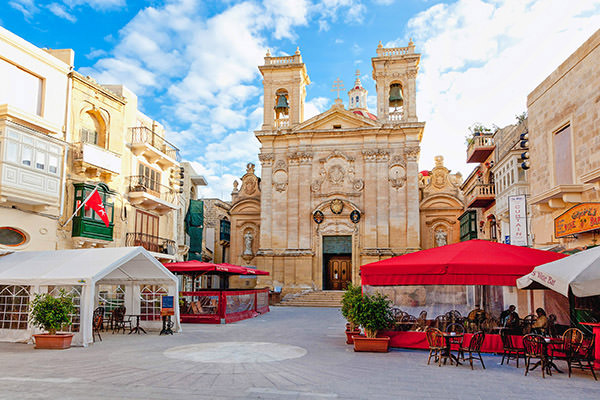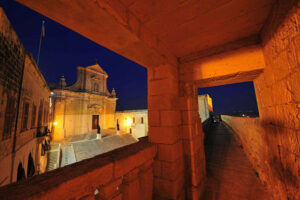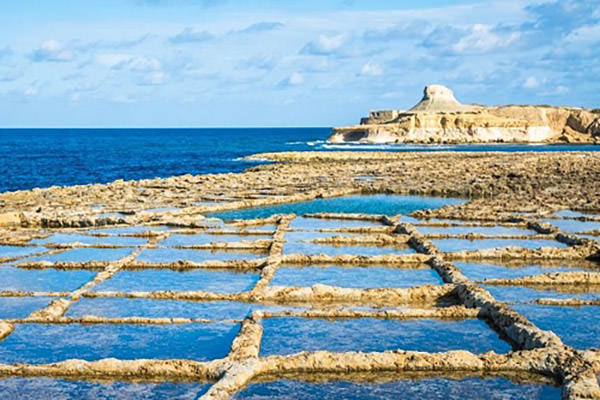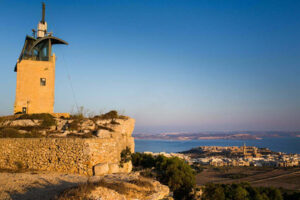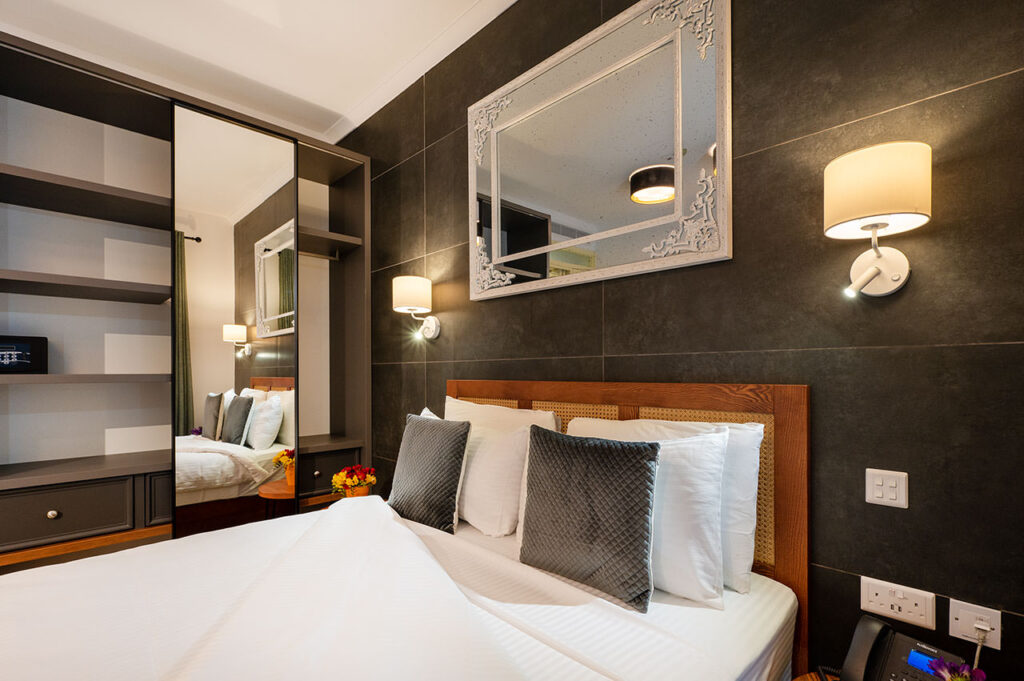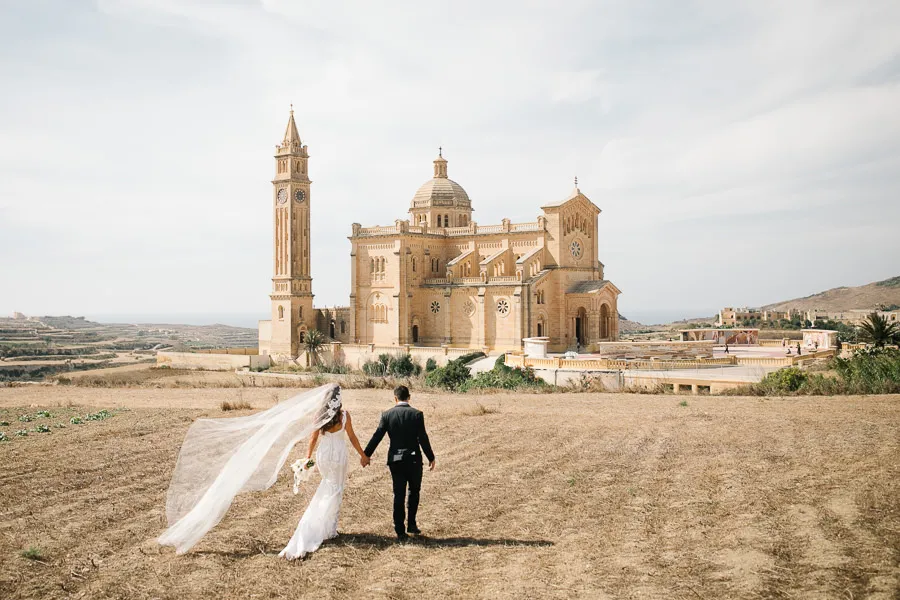In the middle of the Mediterranean Sea lies a small country made up of three inhabited islands and irresistible allure. A cookie-like tan is the dominant color here, thanks to its centuries-old buildings; the water is the bluest of blue, the cuisine is a feast, ancient traditions are still celebrated, and the people are proud but extremely friendly. Welcome to Malta.
Across its three inhabited islands – Malta, Gozo and Comino – you’ll find every sun-soaked aspect of the perfect vacation. There’ll be marveling at prehistoric temples, strolling around spectacular old towns, cooling off in the clear waters of beautiful beaches, and partying the nights away at endless beach bars and clubs. From the capital Valletta to bucolic Gozo, here’s where to get your fill.
The second-biggest island of the Maltese archipelago, laidback Gozo fills in the blanks that Malta left. Getting there is straightforward – regular ferries go from Ċirkewwa on Malta’s northern tip to Gozo where life is slower, nature is wilder, and the atmosphere is more relaxing.
Victoria, the capital, gives Mdina and the Three Cities a run for their money. Start your visit with the magnificent, high-up Cittadella – an ancient walled city with a well-preserved historic core and mindblowing views of the island. Descend to charming Victoria – it’s buzzing with life, with restaurant terraces spilling out onto shaded piazzas and traditional Maltese buff-colored streets. Choose a cafe, order gelato, and forget about the hassle of city life. Gozo is great for that.
It’s even better for going diving, with several world-class locations around the island. The Blue Hole, on the west coast, is a 50-foot deep tube-like rock formation filled by the sea, with an archway and cave at its bottom – pass under the arch and you’ll be in the open sea. It’s a truly mesmerizing dive.
Dwejra Bay, where it’s located, is part of an epic coastline dominated by high cliffs, with the stunning Fungus Rock rising up from the sea. The scenery may ring a bell for “Game of Thrones” fans. Daenerys and Khal Drogo’s Dothraki wedding was filmed here, in front of the Azure Window – a fragile limestone arch straddling the sea. Sadly, the arch collapsed in 2017. Now, you can only see the remains of it by diving.
Imagine a building that is 5,500 years old. In the quiet Ix-Xagħra village in the heart of Gozo you’ll find Ġgantija, a spellbinding complex of two prehistoric megalithic temples, and another site given World Heritage Status by UNESCO. Believed to be important ceremonial sites for Neolithic people, they sprawl over a whopping 77,000 square feet. There’s also an interactive museum to give you more information about their usage and ancient appearance.
Despite the passing of all the centuries, it’s still a calm, meditative place. Archaeologists have spent decades researching them, and have yet to discover exactly how they were used. Animal remains found on site point towards sacrifices, while the abundance of exaggeratedly voluptuous feminine figurines suggests a fertility cult.
If Malta is the urban island and Gozo its lowkey sibling, Comino is the wild cousin. The population is a modest two people, there are no cars, and no signs of globalization – just the untouched Mediterranean. Most visitors come for the Blue Lagoon – a shimmering, shallow bay whose water is an almost unreal azure color.
But while other visitors go straight back to the main islands, you should stay on Comino. Just a mile away is the 17th-century St. Mary’s Tower, one of the defensive structures erected by the Knights of Malta to signal the enemy’s approach with cannon fire – the Comino Channel was a strategic waterway between Malta and Gozo.
For beaches, you need Santa Marija Bay and San Niklaw Bay, both within a mile of both Blue Lagoon and St. Mary’s Tower. Thoroughly rested, hike up Ġebel Comino, the highest point on the island – although at around 275 feet, it’s not exactly high, it has beautiful views of all the islands. For snorkeling, try Cominotto, a tiny island right next to Comino.
Malta itself is the biggest island in the Maltese archipelago, and many visitors see no need to leave it. No wonder – the 95-square-mile (246-square-kilometer) island ticks all the boxes for history, culture, beaches and even nightlife.
Start at Valletta, the Maltese capital since 1571. It’s a city intrinsically linked with the Knights of Malta – a powerful military Catholic order thought to date back to the 11th century (still in existence today, it’s currently headquartered in Rome). Founded upon the orders of Jean de Valette, a grand master who was the Knights’ leader during the victorious Great Siege of 1565 when the Ottoman Empire failed to capture the island after nearly four months of battle, Valletta is an epic-looking city fortress.
Baroque palaces swagger beside quaint restaurant terraces, and lively coffee shops with knockout views occupy the stairs leading from the port to the Old Town. Red telephone booths – a reminder of 150 years of British rule from 1814 to 1964 – stand under Valletta’s trademark carved wooden balconies, painted all colors of the rainbow.
What to see? There are fantastic views of the Grand Harbour and its forts from Upper Barrakka Gardens. St. John’s Co-Cathedral is a mesmerizing monument to the wealth of Knights of Malta with two works by Caravaggio inside: a pensive “St. Jerome” and the “Beheading of St. John the Baptist,” his largest work of art. The National War Museum in Fort St. Elmo recounts Malta’s military history.
Culture here isn’t just ancient, though. The Floriana Granaries – once a storage space for grain, and now Malta’s largest public square – makes for a magical outdoor venue that regularly hosts festivals and concerts of world-famous artists.
To try some local specialties, head to the cozy Cafe Jubilee, which serves mouthwatering stuffat tal-fenek (slow-cooked rabbit, a Maltese favorite), superb ravioli with traditional Gozo cheese, and imqaret: date-filled pastry, often served with ice cream.
Squaring off against Valletta on two peninsulas straddling the Grand Harbour are the so-called Three Cities: Vittoriosa, Senglea and Cospicua, neighboring fortified towns. It was here that, in 1565, the Great Siege of Malta was won, leading to the founding of Valletta – and in fact all three have two names, both pre- and post-siege.
Start with Vittoriosa (also known as Birgu, its pre-siege name), a small fortified town with some of the prettiest streets and churches on the island. Get lost among the winding pathways of the historic core with its colored doors and balconies, and statuettes of the Virgin Mary gracing the facades, windows, and street corners.
Proceed to equally gorgeous Cospicua (AKA Bormia) to admire the docks – overhauled by the Brits in the 19th century – and city gates. Finally, cross the harbor to Senglea (l’Isla) for a coffee overlooking the water and Valletta on the other side. DATE Art Café is an ideal choice.
When you leave Senglea, take the traditional dgħajsa boat – a shared wooden water taxi – back to Valletta.
The colorful boats are swaying lazily on gentle waves but the main street is far from calm. It’s Sunday and Marsaxlokk’s fish market is in full swing, gathering the restaurateurs, locals, and tourists from all over the island to buy the fresh catch brought by the local fishermen. This has always been a quiet fishing village on Malta’s southern coast.
Come here for its pretty waterfront (perfect for sunset walks), and a wide array of seafood restaurants whose terraces perch beside the water. As well as Sunday’s fish market, there’s an all-week market for souvenirs and local produce.
You’re here to eat seafood, of course. Choose between klamari mimlija (stuffed squid), grilled lampuki (mahi-mahi), and stuffat tal-qarnit, a delicious octopus stew. Afterwards, have a rest on the rocks – flat and made for sunbathing – at nearby St. Peter’s Pool, a cove with crystal-clear waters.
As you’d expect, Malta has natural sights aplenty. Perhaps the most famous is the Blue Grotto, on the island’s southern coast. From a viewpoint above you’ll get panoramic views of this spectacular system of sea caverns with their almost unreal blue waters. Boat trips – leaving from a nearby pier – take you inside.
While the grotto is one of the most popular (and touristy) spots on Malta, the translucent waters – allowing views of up to 16 feet down – make up for the crowds. The boat is also the best way to admire the majestic white cliffs of the surrounding coastline.
Hagar Qim is one of Malta’s spectacular megalithic temples. Felix Choo/Alamy Stock Photo
If you’re interested in archaeology and ancient history, you need to make a beeline for the UNESCO World Heritage site of Ħaġar Qim, a megalithic temple complex with sweeping views over the sea – just a few minutes’ drive from the Blue Grotto. Dating back as far as 3,600 BCE, it’s several thousand years older than the Egyptian pyramids and Stonehenge, and one of the oldest religious buildings on the planet. The main temple – which you can walk through, as they did all those years ago – is surrounded by three other megalithic structures. A five minute walk away is another temple, that of Mnajdra – another of the seven temples protected under that UNESCO listing.
So you want to see the real Malta, but you’re also partial to resort towns. The solution: Marsaskala, towards the southeastern tip of Malta island. Its harbor is among the most scenic on the island, the seafront promenade is ideal for contemplative walks or scenic runs, and the center is dotted with pubs, bars, restaurants and takeaways.
The real beauty of Marsaskala, however, is that it’s more affordable and less glamorous than the better known resort towns of St. Julian’s or Sliema. Just south of the town is the beautiful St. Thomas Bay, where you can have a swim. It’s extremely family-friendly, with a children’s playground, picnic tables and shower. It even caters for both sand and rocky beach lovers, with limestone rocks on one part, and a sandy beach the other.
Time stands still in Mdina. The medieval capital of Malta, it wears its former status with grace, mesmerizing with a kaleidoscope of palazzos, shaded little squares, elegant fortifications and bougainvillea-covered facades. Today, its strategic position in the center of the island is less crucial for defense possibilities – it’s more about those photogenic 360-degree views.
Today Mdina resembles an open-air museum rather than a full city – only 300 people live inside the ancient walls. But it’s one of Malta’s most evocative places, and an essential stop to get a history fix.
See the fantastic baroque interior of St Paul’s Cathedral, get to Bastion Square for the observation tower on top of a bastion on the city walls – it offers fantastic views of the island. Don’t miss the 18th-century Palazzo Vilhena, home to Malta’s National Museum of Natural History.
Just outside the city walls is a small bar named Crystal Palace serving pastizz, a classic Maltese street snack in the shape of savory pastry with various fillings. Try the ones with ricotta cheese or mushy peas. Or, better, try both.
The Romans also left their mark in Malta and Mdina bears signs of their presence. St. Paul’s and St. Agata’s catacombs give Rome’s catacombs a run for their money. Meanwhile, Domvs Romana is a museum on the site of an ancient villa, displaying items from the home, including mosaics.
Once a popular residence for wealthy Maltese and the British, who built many Victorian and Art Nouveau villas here, today Sliema – just north of Valletta – is the commercial heart of Malta with international offices, shopping malls, never-ending restaurants and bars, and high residential complexes. For the Maltese, it’s a love-it-or-hate-it kind of place with controversy surrounding its rapid development. For tourists, it’s a good place to base yourselves if you want to be close to everything but hyper-connected.
The promenade is home to beach bars, plenty of spots to take a dip, and knockout views of Valletta, while “party boats” leave nightly from the harbor.
You may have heard about Malta as an island of wild nightlife. Well, that’s Paceville, located in St Julian’s, the next harbor town after Sliema, heading north from Valletta. Less glamorous than Ibiza or Mykonos, it’s a loud and rowdy party area, reaching its bombastic crescendo in the triangle formed by Paceville Piazza, Santa Rita, and St. George’s Road. There’s lots of booze, screaming crowds, noisy pumping music, and late-night snacks and hookah bars. Be prepared to stand in long lines at nightclub entrances – and be prepared to find not much space inside.
If exploring from the comfort of a resort is something you’re looking forward to, then Mellieħa Bay and St. Paul’s Bay fit the bill. At the northern tip of Malta, closer to Comino than to Valletta, they both have a wide selection of hotels big and small, affordable and upscale, with swimming pools and without.
Għadira Bay in Mellieħa is a long and shallow sandy beach that’s perfect for families. Mellieħa village, located above the bay, has a more remote, more local feel to it thanks to its hilltop location.
Over in St. Paul’s Bay, Bugibba is a classic seaside resort town with fast food chains, a kaleidoscope of bars and restaurants, a promenade and even an aquarium. Qawra Point Beach on the northeastern tip of Bugibba, allows you to take a plunge with views of Malta’s rocky northern coast.
Before being a filming location for “Game of Thrones,” “Troy,” “Assassin’s Creed” and the most recent “Jurassic World Dominion,” Malta stood as a background to the 1980 Robin Williams-led musical “Popeye.” While the movie itself didn’t fare that well, either at the box office or with critics, its set remained near Mellieħa and was turned into an entertaining family theme park.



